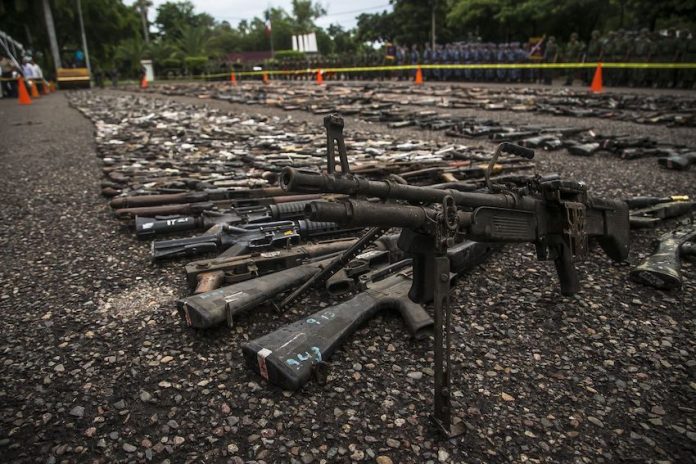The United States and Mexico have grappled with increasing arms and drug trafficking for several years.
In response to recent surges in violence, Mexico’s Attorney General’s Office (FGR) and the United States Bureau of Alcohol, Tobacco, Firearms and Explosives (ATF) undertook a joint effort to trace the origin and number of firearms in Mexico coming from or through the United States.
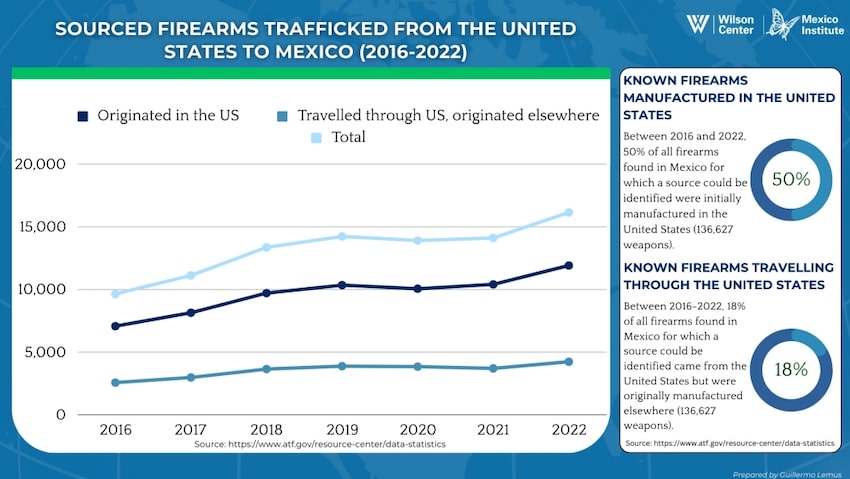
The data in this article highlights the growth in the bilateral arms trade, with particular emphasis on the years 2016-2022.
Mexico’s Foreign Affairs Ministry found that 70-90% of traced firearms originated from and passed through the United States. The ATF and the U.S. Government Accountability Office (GAO) estimated a lower rate of 68%, comprising 50% domestically produced and 18% imported into the U.S., and ultimately found in Mexico.
The ATF data unveils compelling insights. Although pistols consistently topped the list of firearms found by the ATF, there was a 105% increase in rifles found in Mexico and reported from 2016 to 2022, meaning that cartels may be favoring this type of firearm.
Specific U.S. counties have been linked to weapons found across Mexican municipalities, spanning from the Pacific to the Atlantic coasts, as highlighted by former Foreign Affairs Minister Marcelo Ebrard and the FGR.
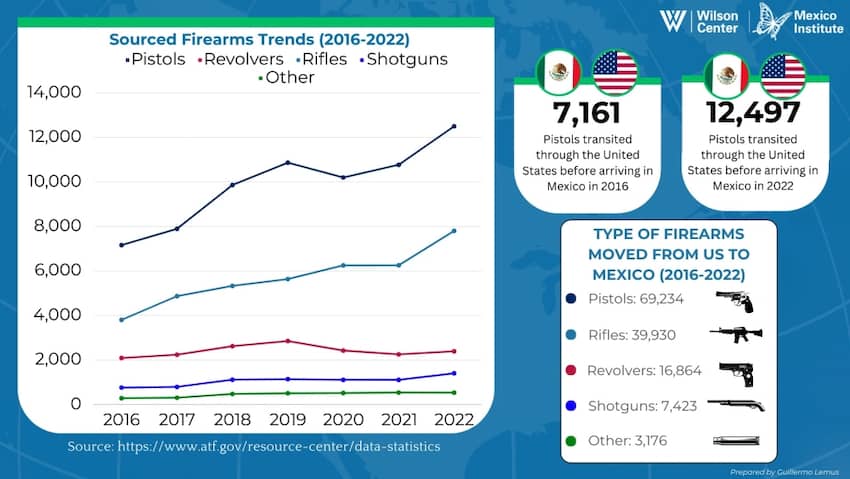
Concurrently, the United Nations Office on Drugs and Crime (UNODC) has identified the presence of “ant-trafficking,” the intentional diversion of firearms from legal channels, and straw purchases, where individuals buy guns on behalf of others, along these routes.
These actions intensify the illegal transportation of firearms. The presence of guns in Mexico, as well as these two phenomena, demonstrate the connection of these trafficking routes, amplifying illegal firearm transportation.
The increase in these practices necessitates enhanced collaborative efforts between the United States and Mexico to curb the unlawful flow of firearms.
“Ant-trafficking” is identified by UNODC as a cross-border firearm trafficking phenomenon that involves discreet movement of small quantities, often targeting localized demands.
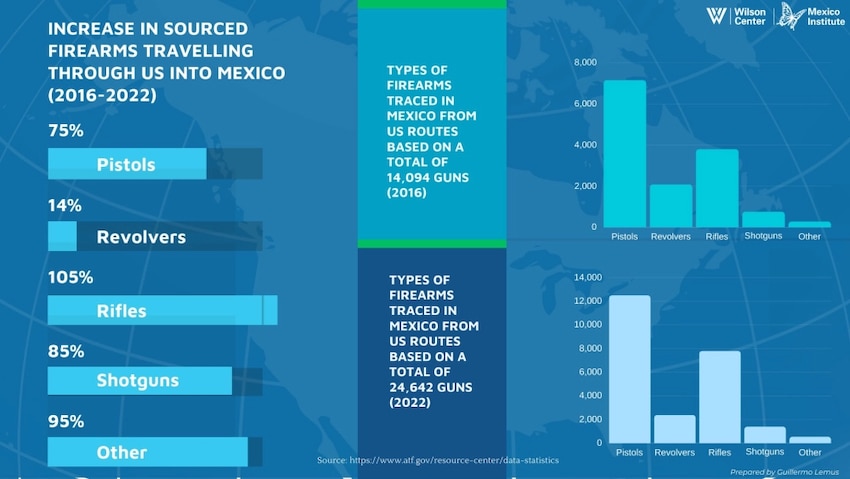
It is characterized by smaller batches and single straw purchases — a method where the intended buyer, either incapable of passing the mandatory federal background check or seeking to distance themselves from the transaction, employs another person who can successfully navigate the background check to acquire the firearm on their behalf.
Law enforcement data indicates that the majority of cross-border seizures involve fewer than five firearms, supporting the “ant-trafficking” pattern (UNODC, 2020; ATF, 2021).
Moreover, the U.S. grapples with the persistent issue of firearms trafficking across both its northern and southern borders. Illegal purchase of firearms within the U.S., often orchestrated by straw purchasing cells at the direction of cartels, fuels trafficking into Mexico (ATF, 2021).

These infographics feature data sourced from the ATF, verified by the GAO. Additional information is derived from the White House, Mexico’s Office of the Attorney General (FGR), and UNODC on cross-border firearm trafficking between 2016 and 2022.
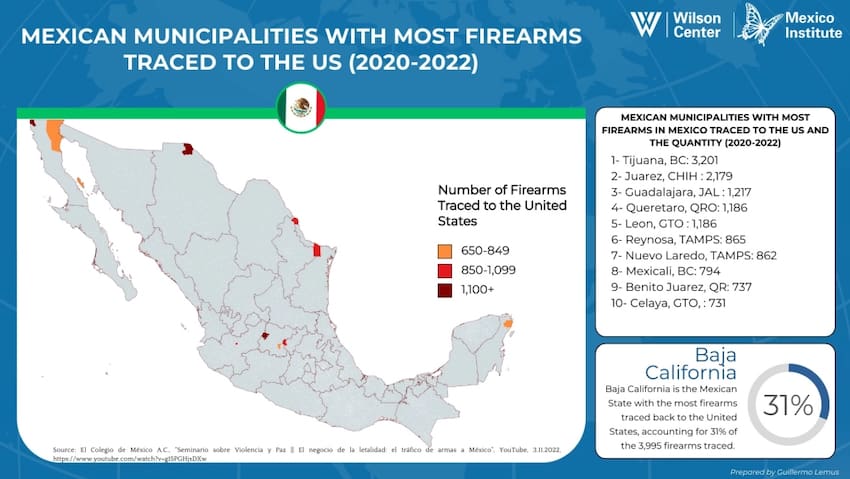
This article was originally published by The Mexico Institute at The Wilson Center.
Guillermo Lemus graduated in 2023 with a Bachelor of Arts in International Studies from BYU-Idaho, with an emphasis in Public Policy and Administration, before pursuing an Internship in D.C. with Congressman Correa’s Office. Previously, he was a staff assistant intern in the Mexico Institute.
